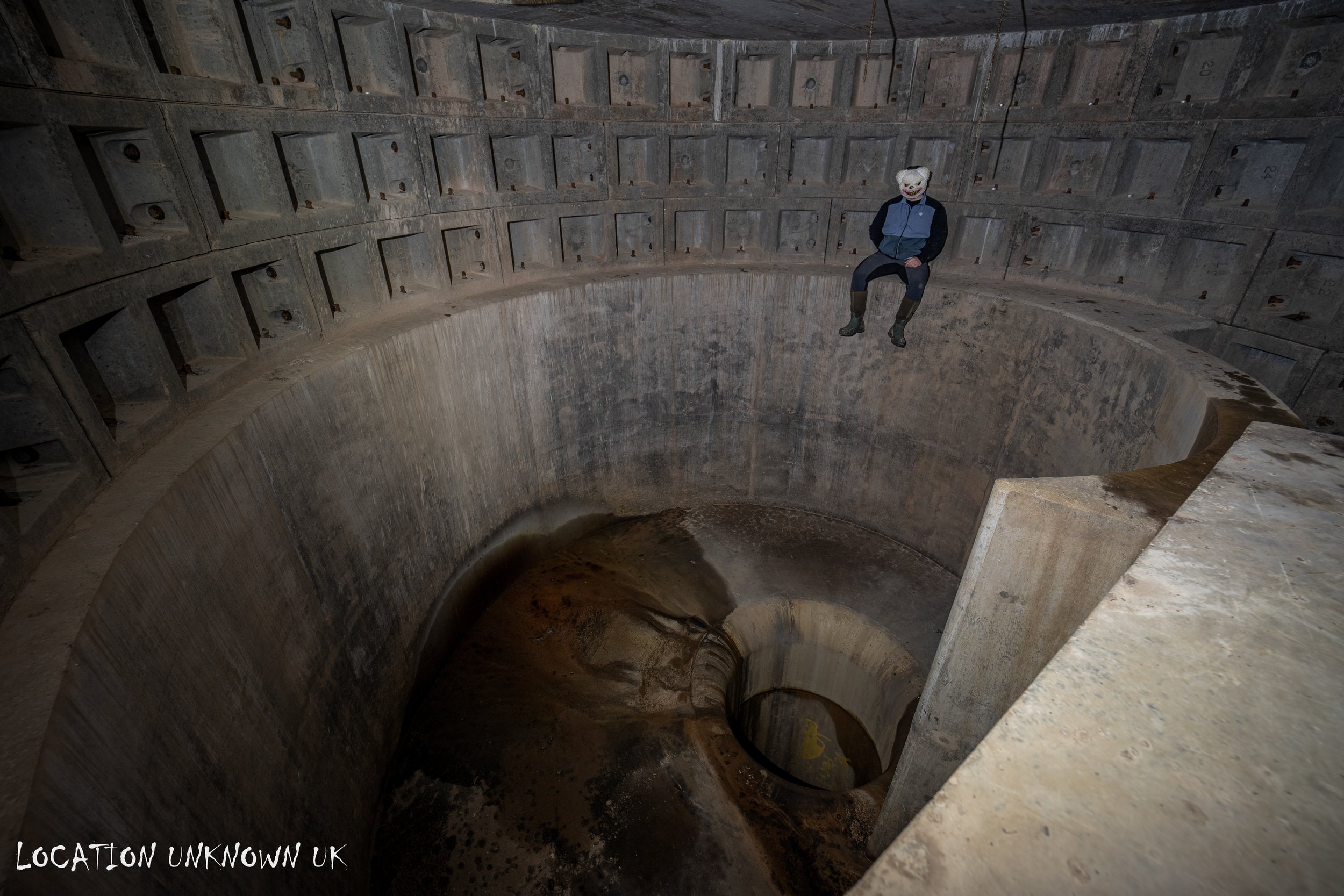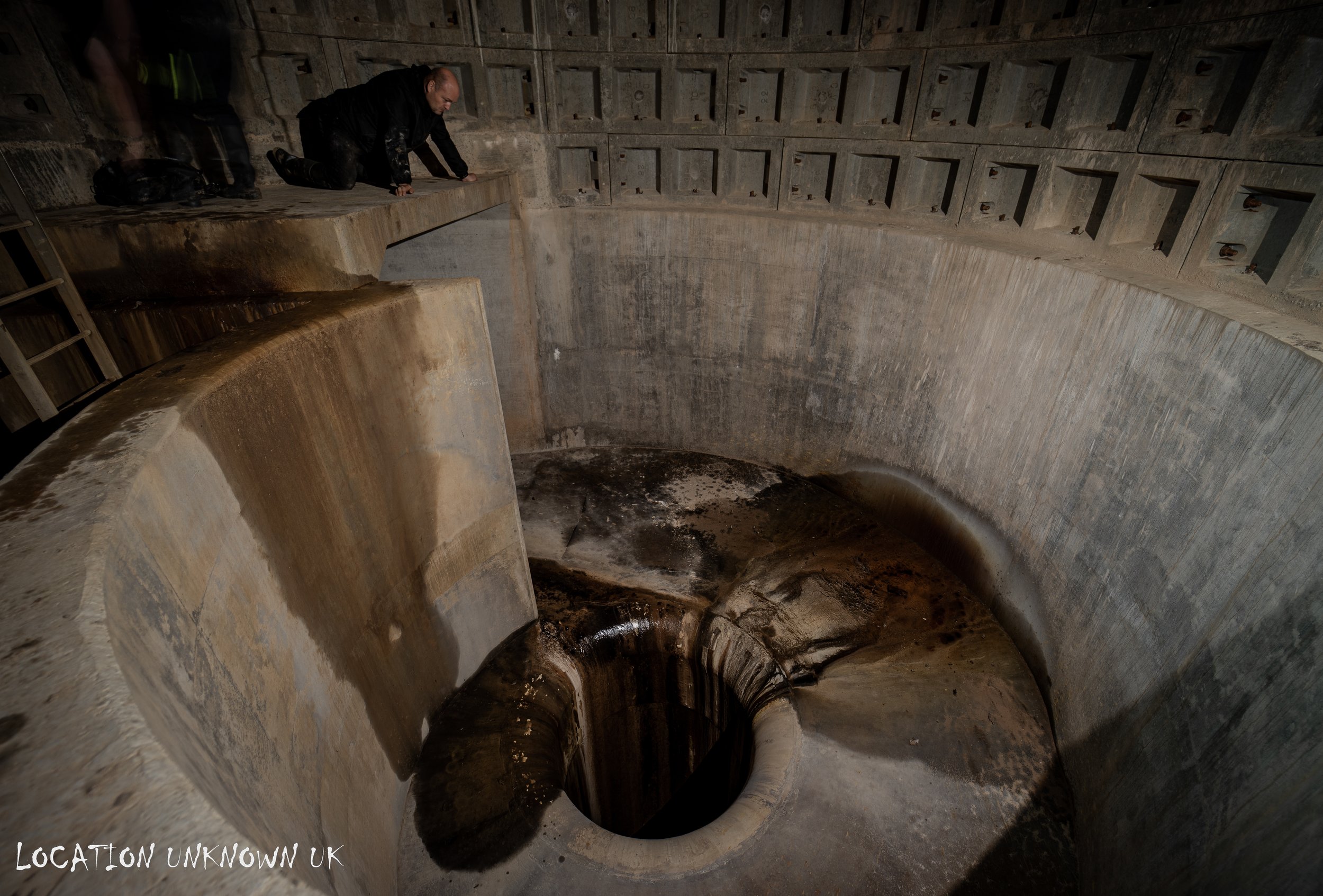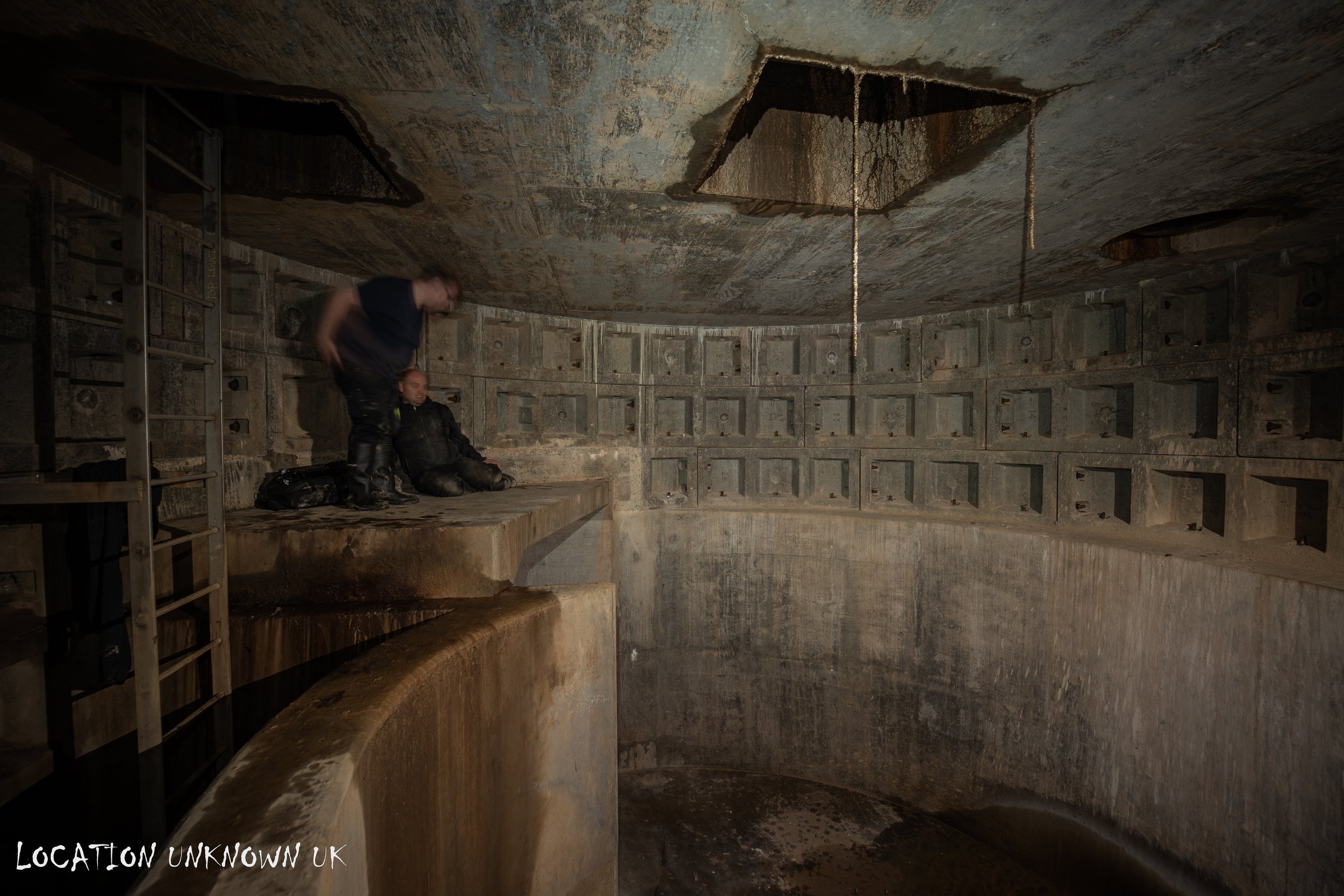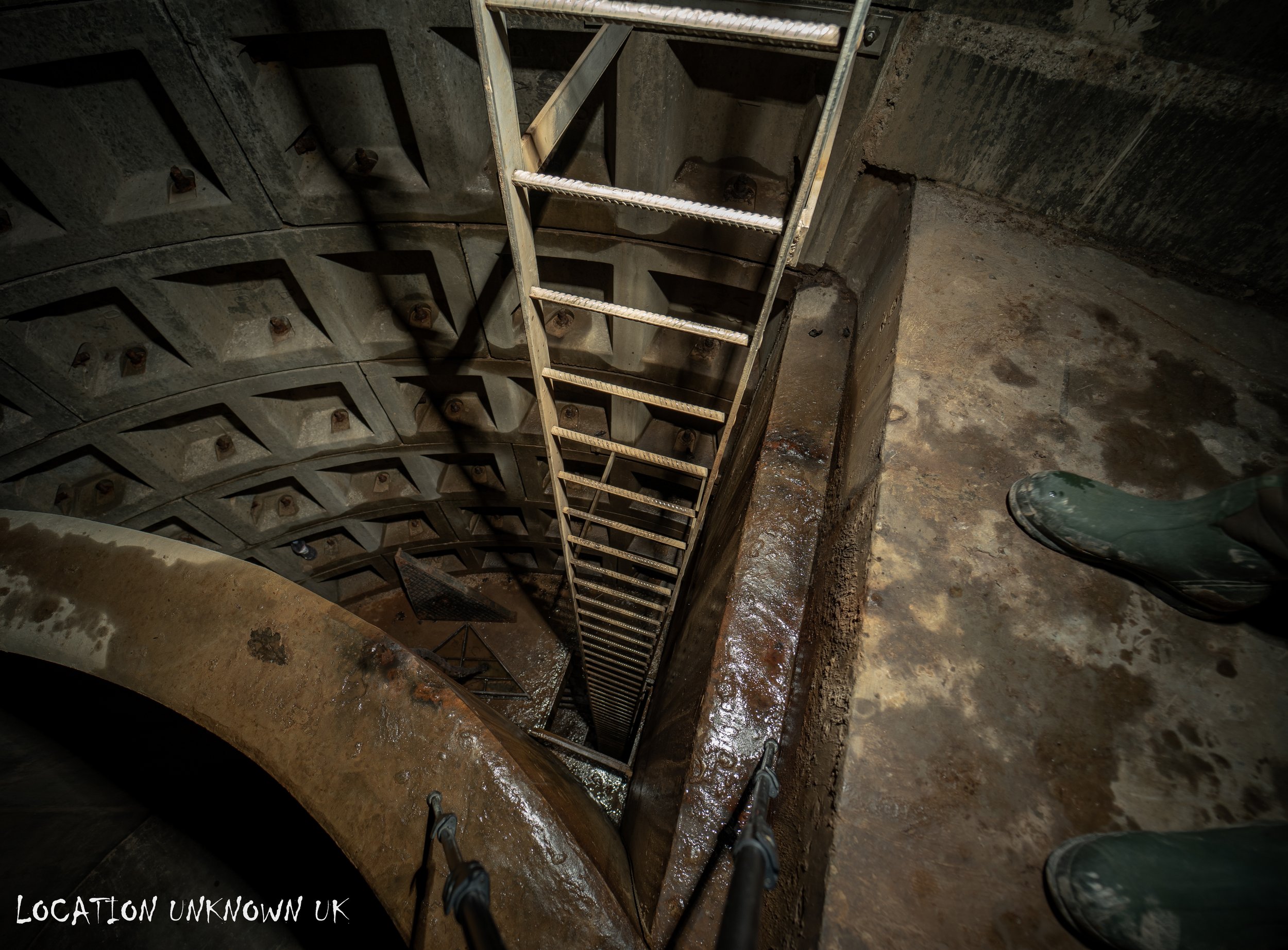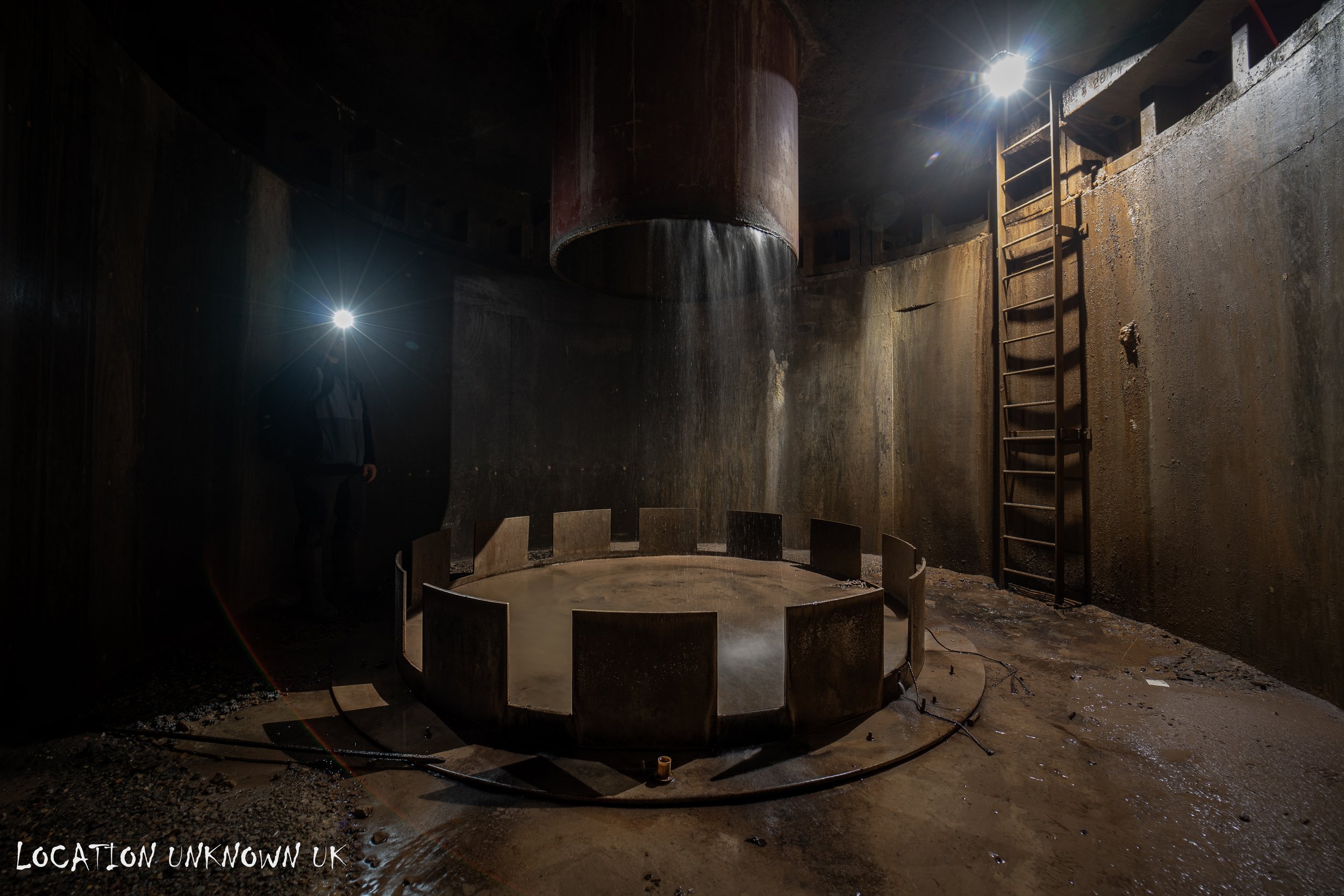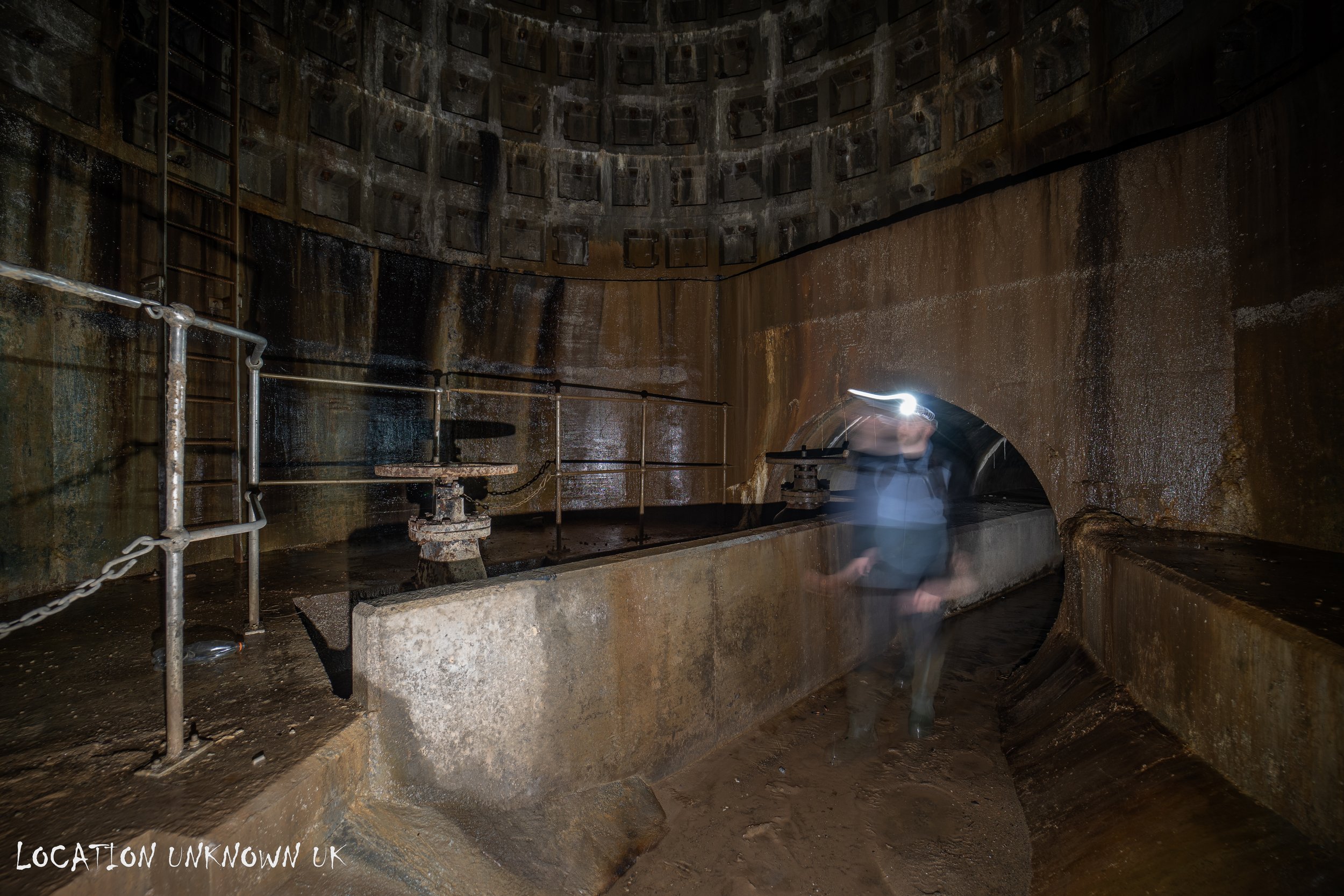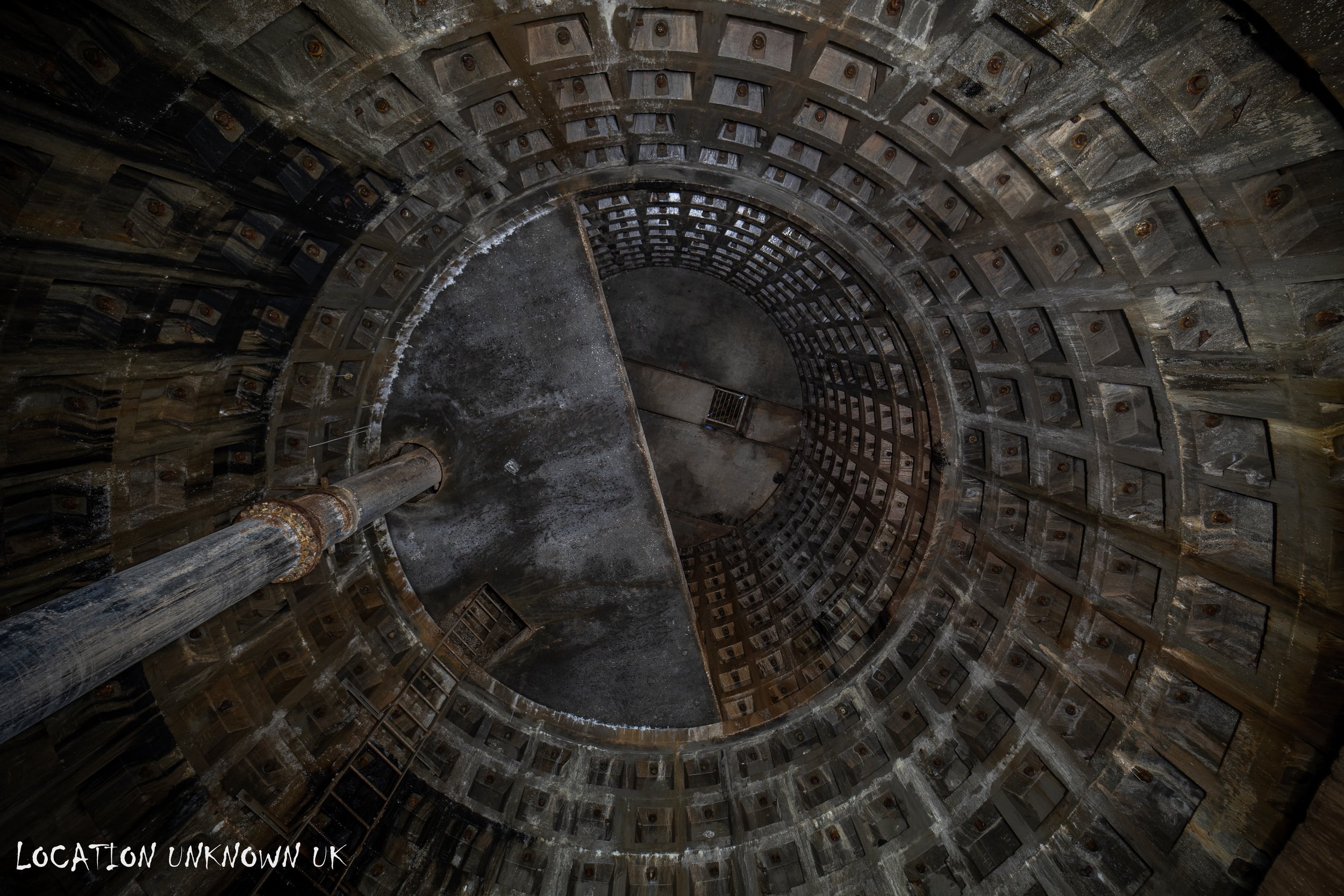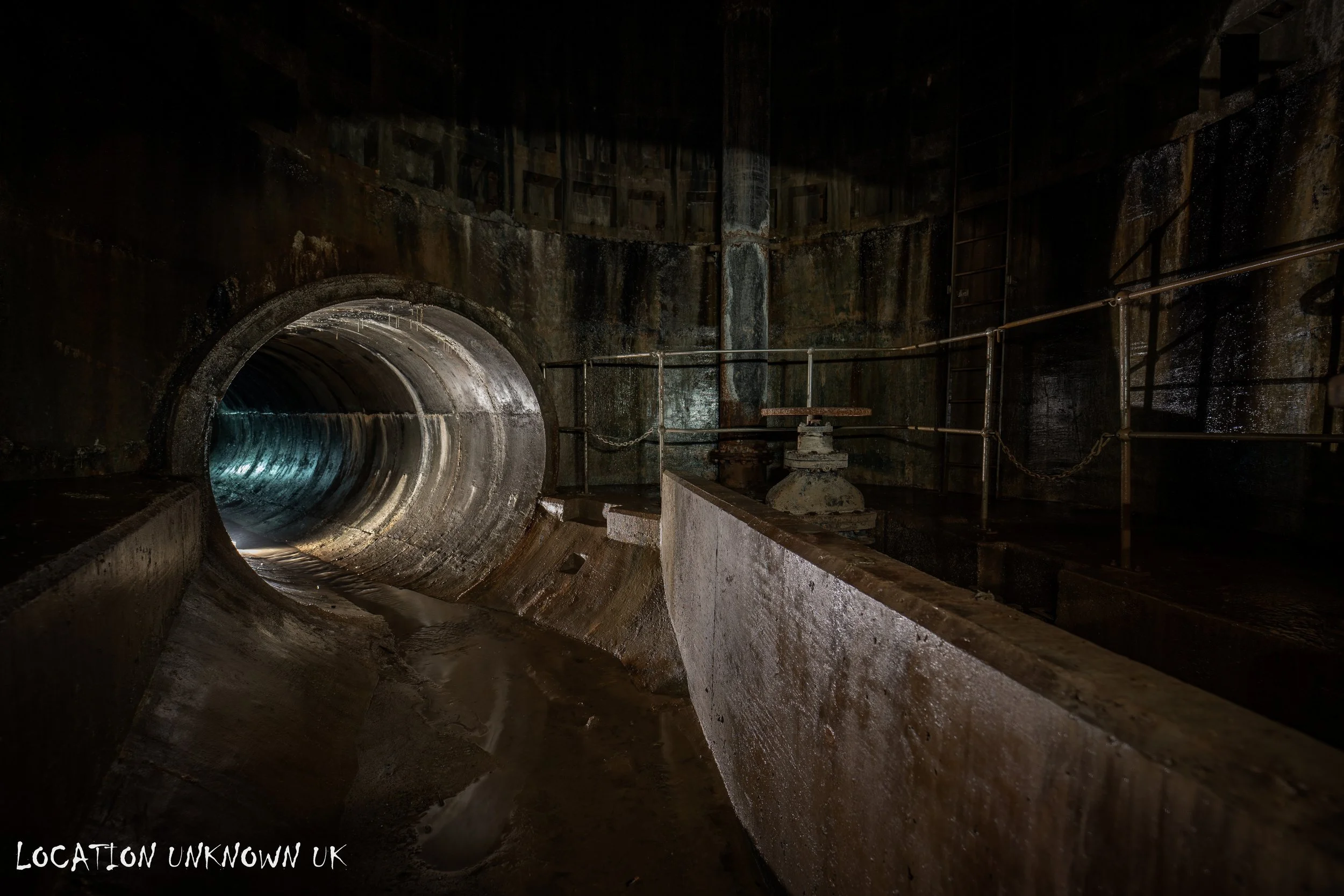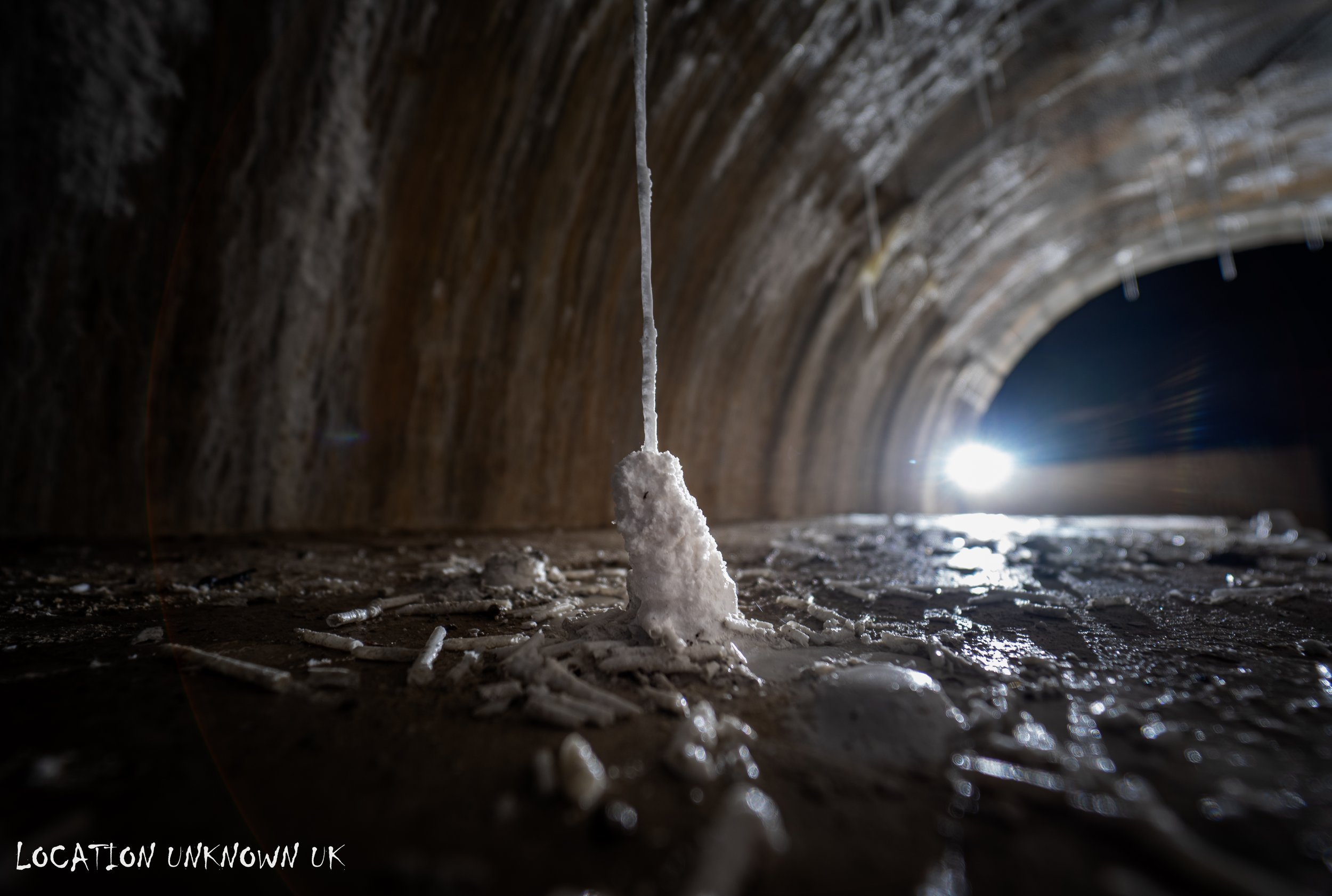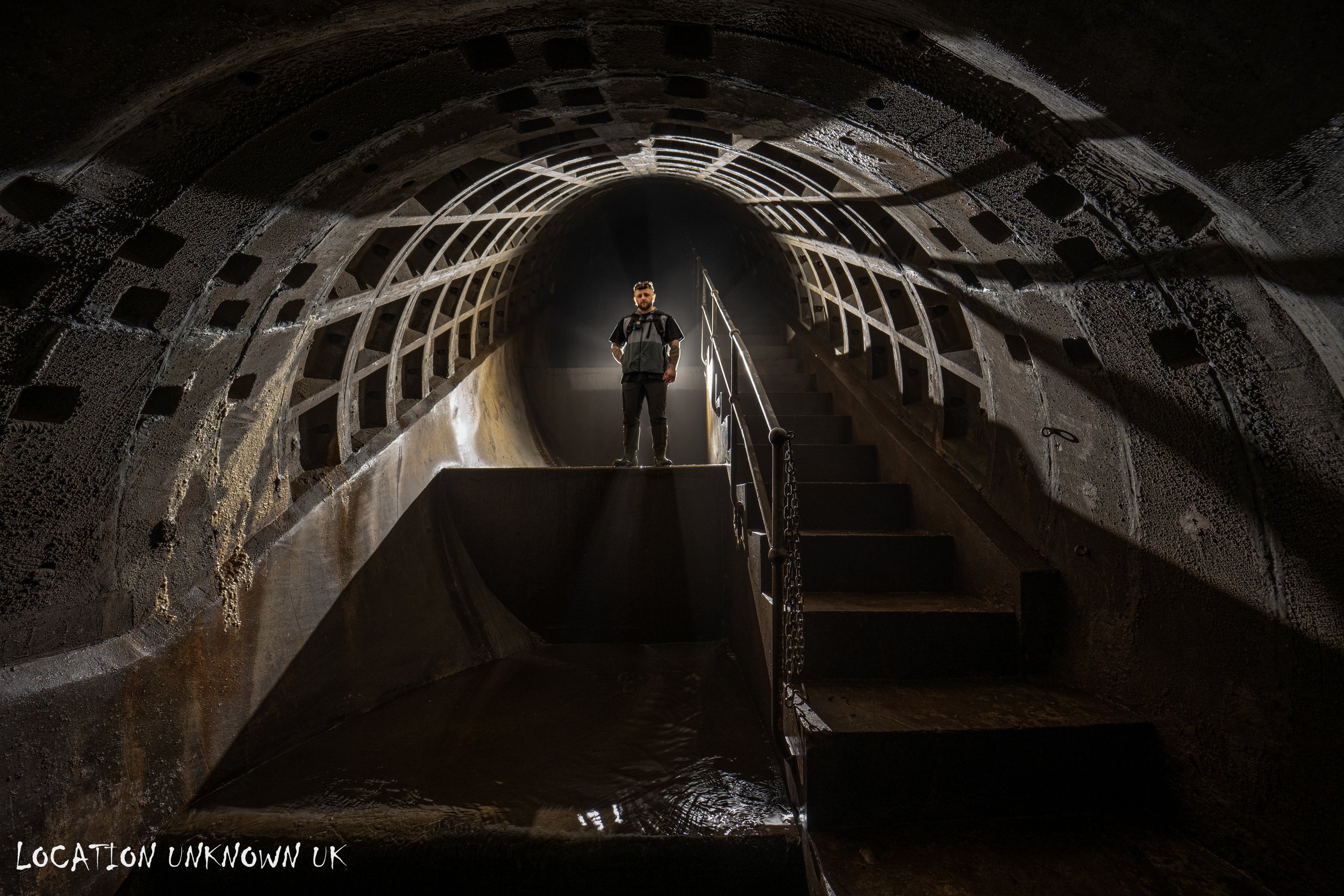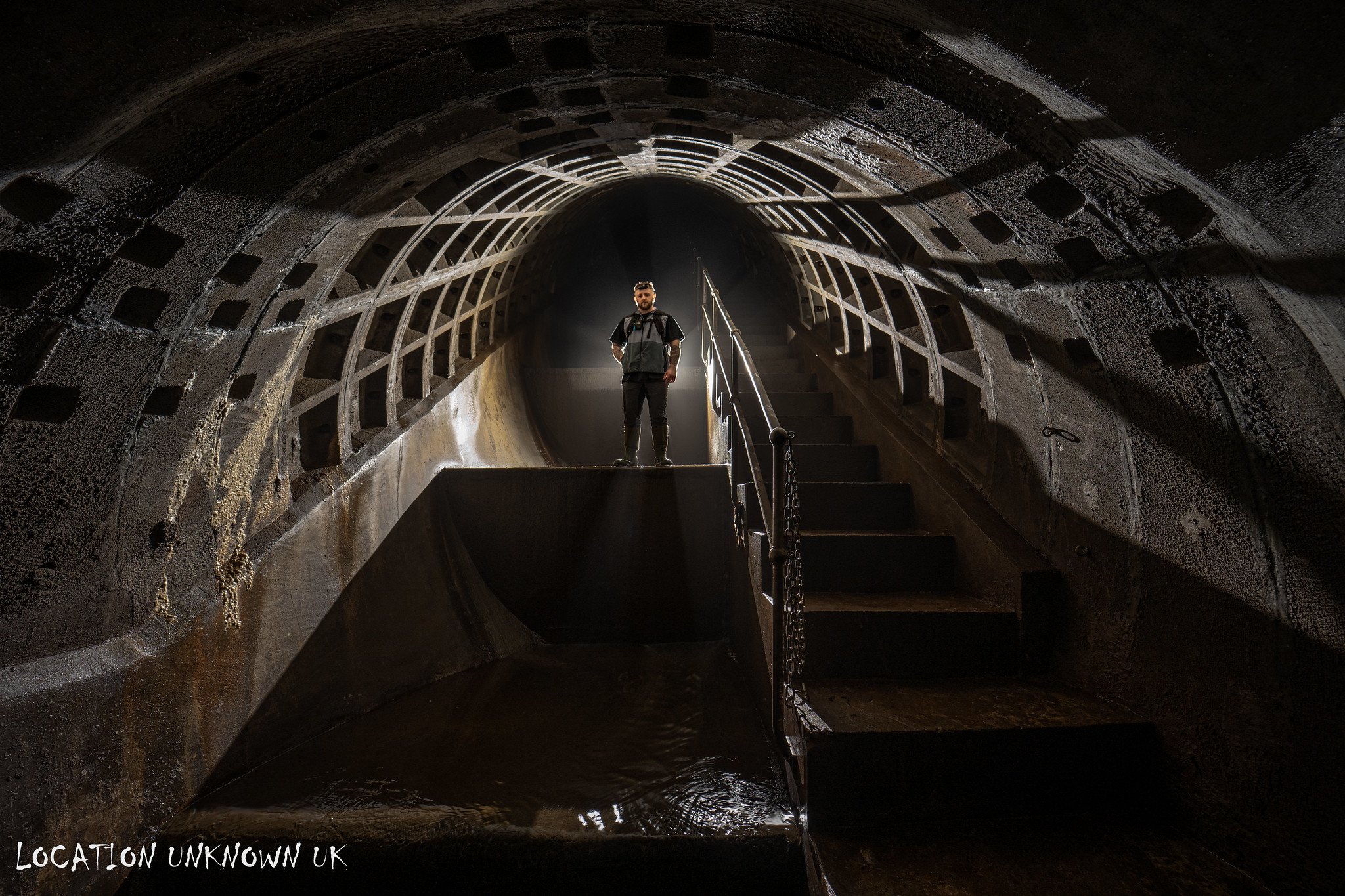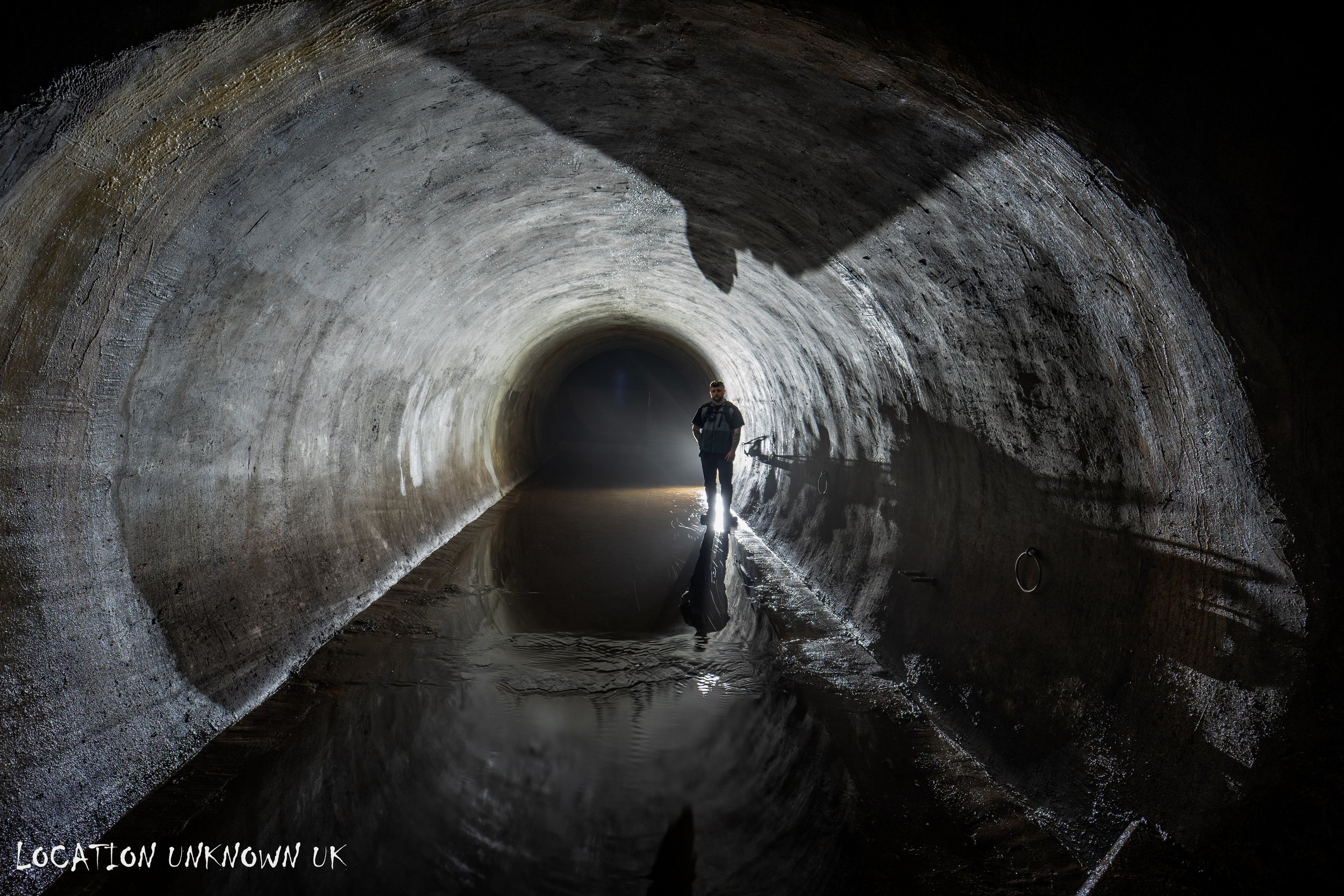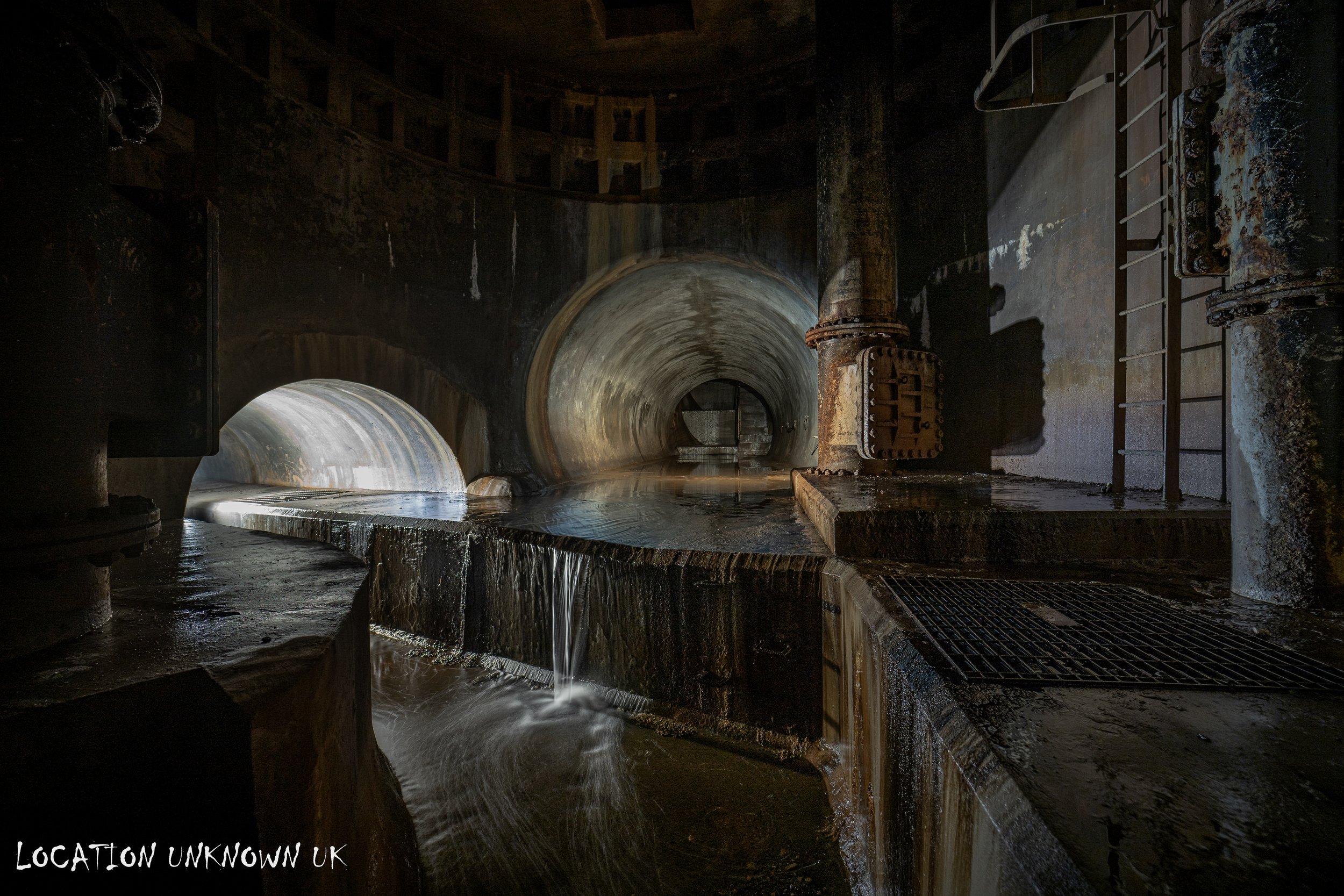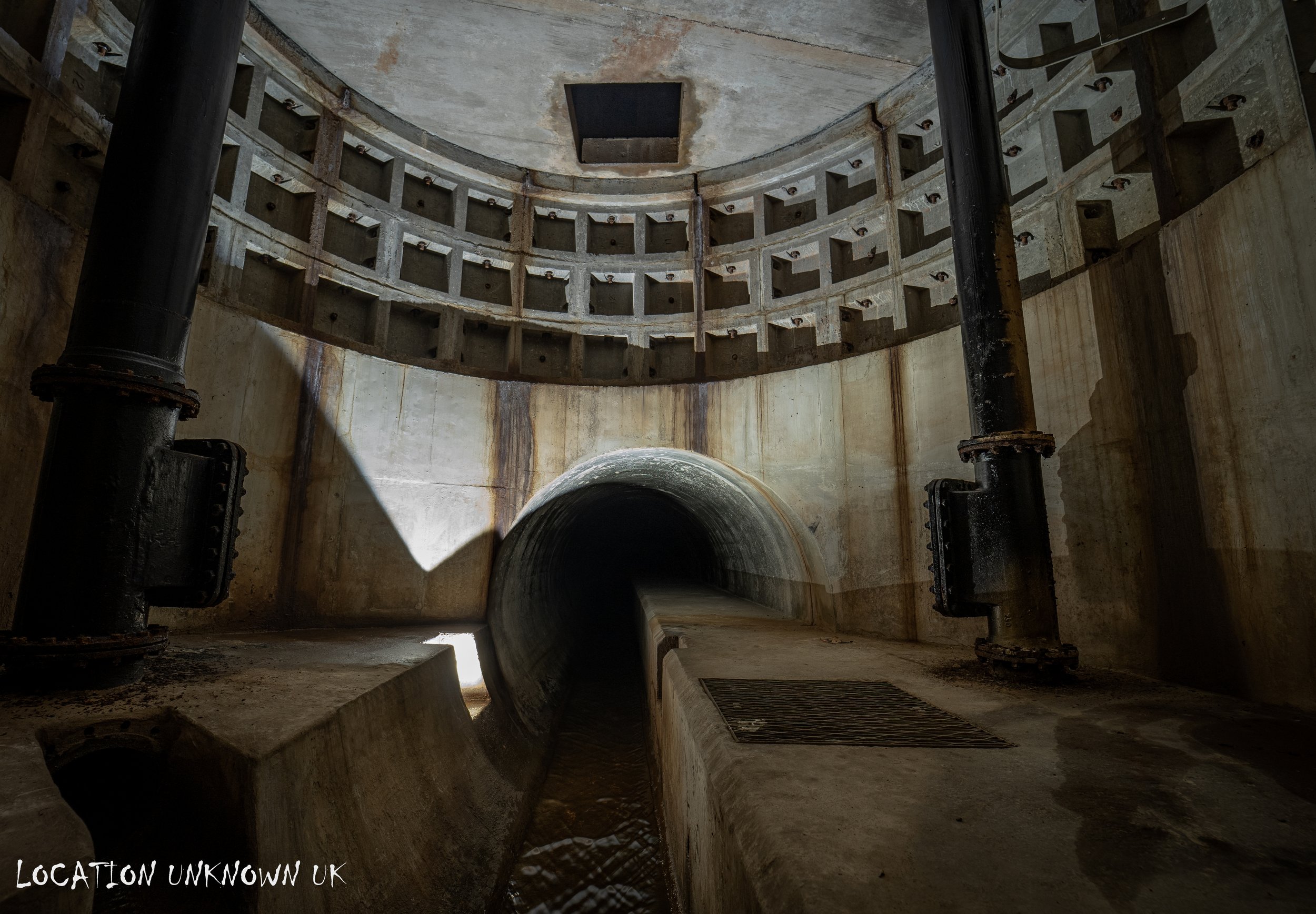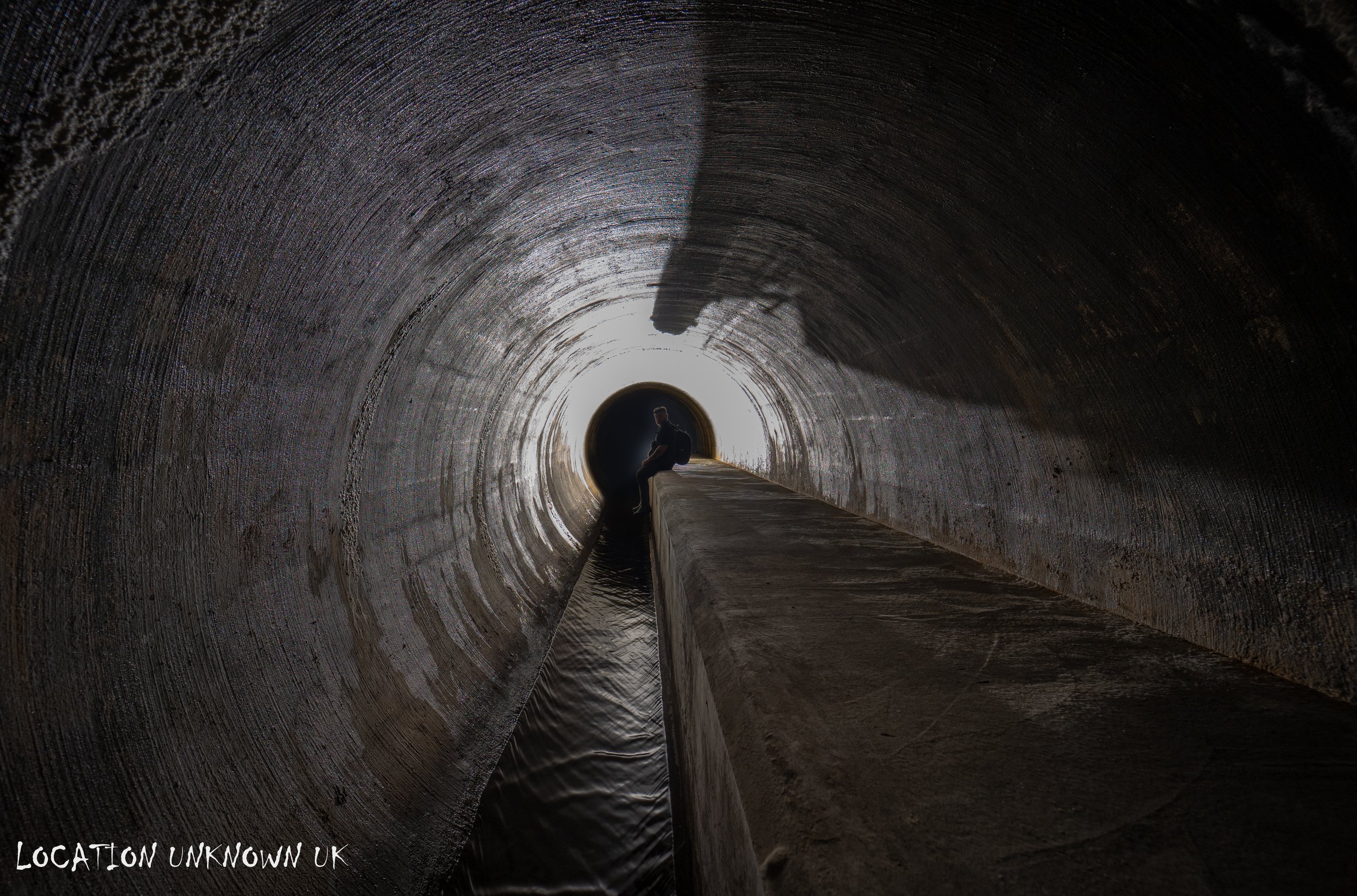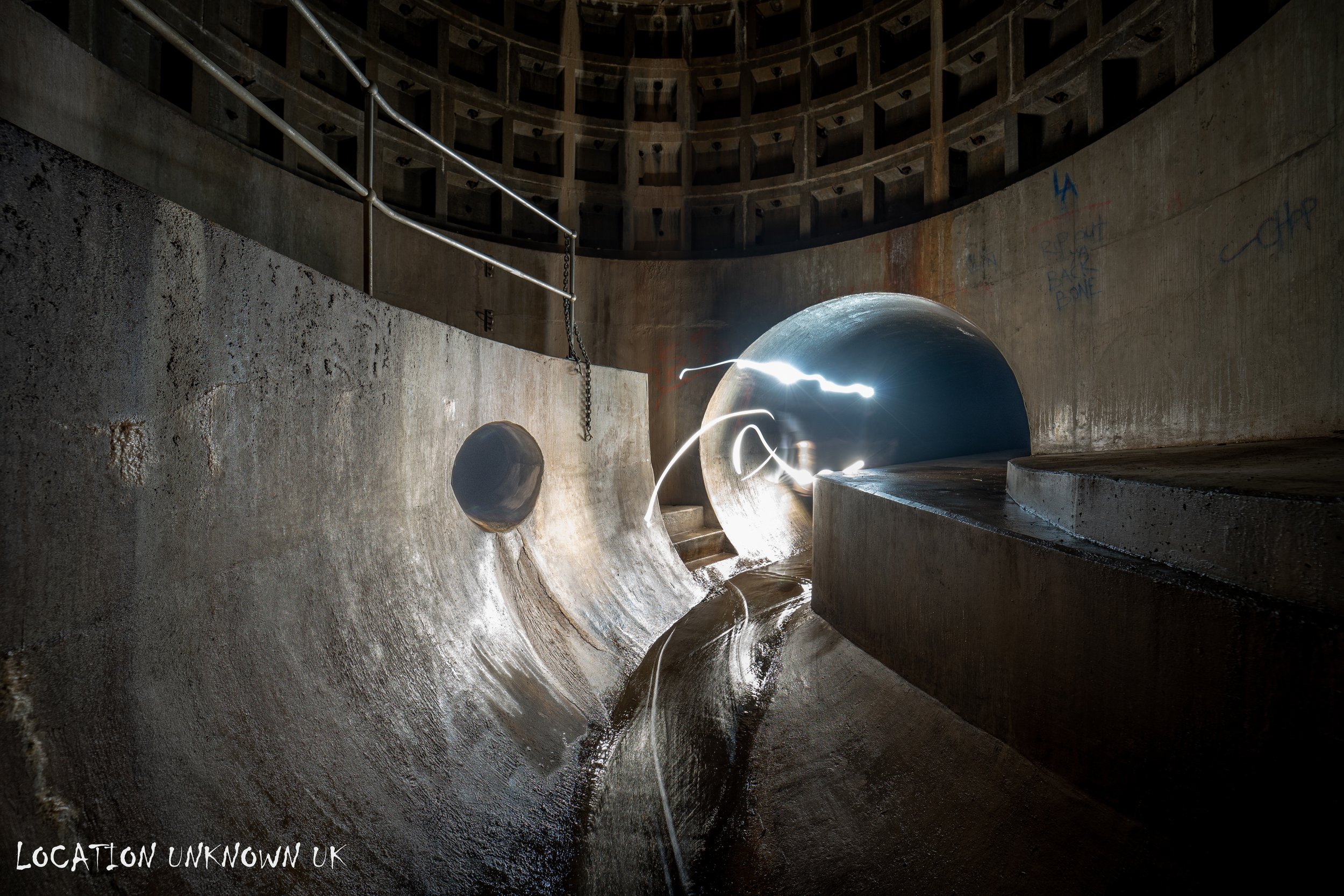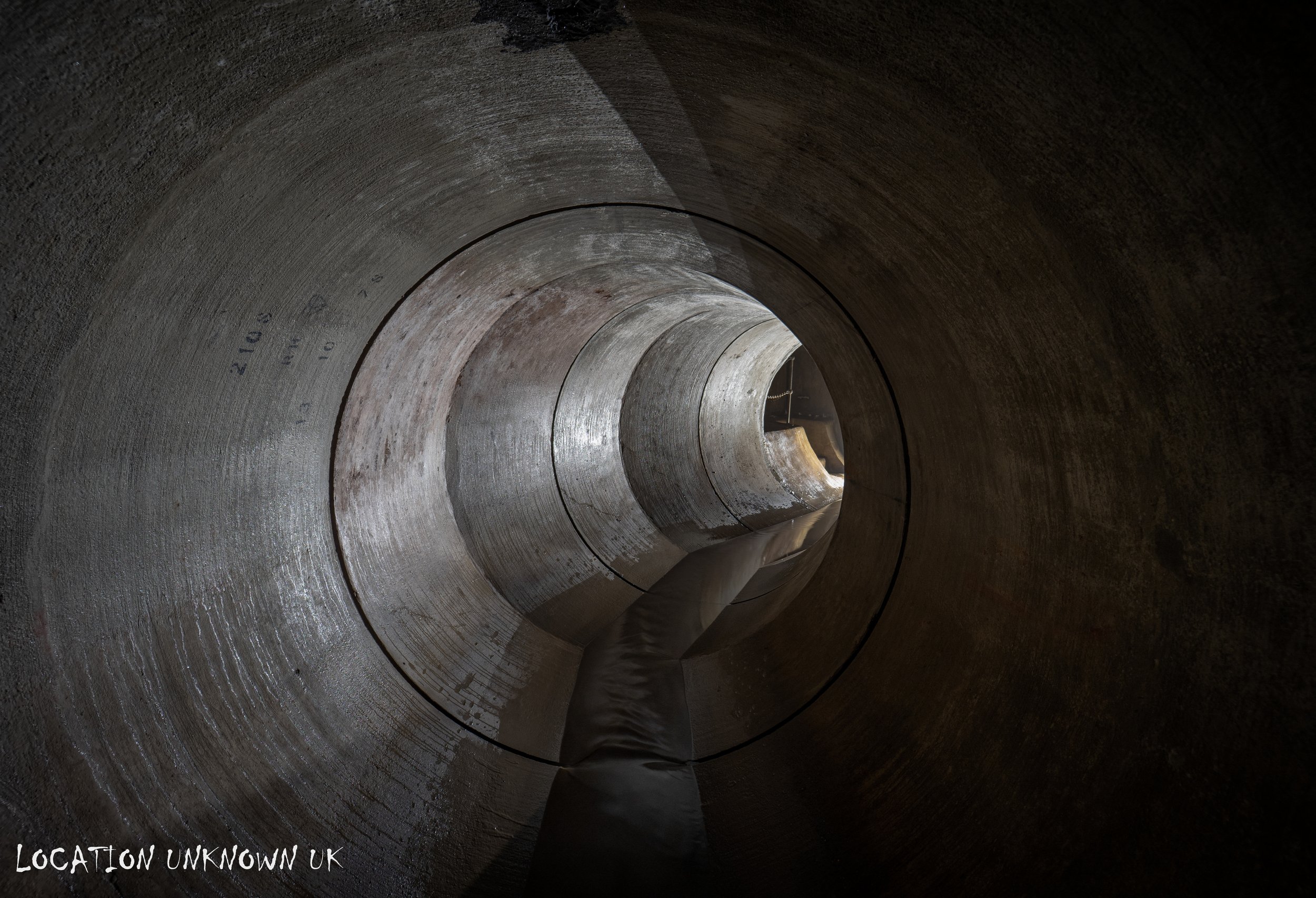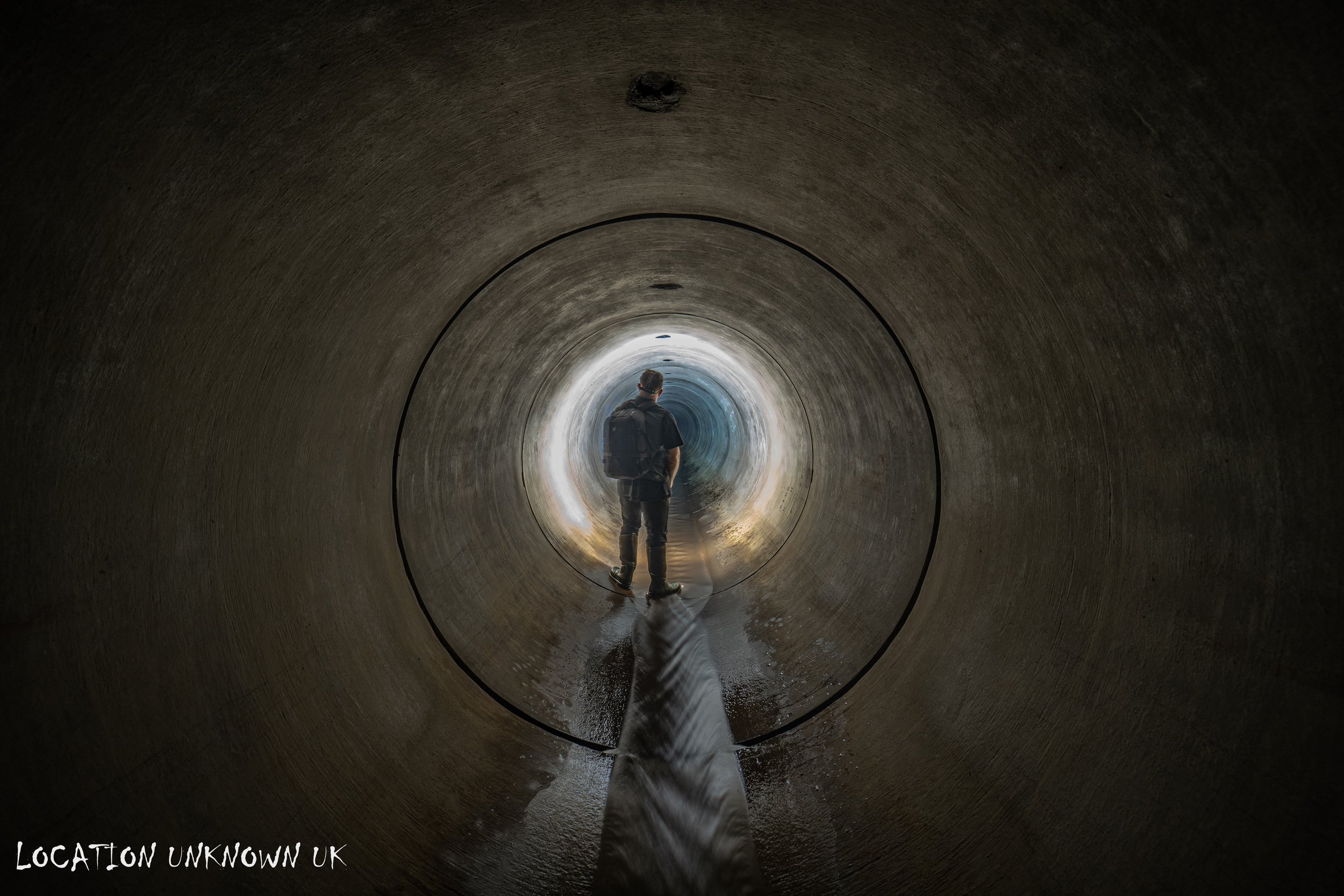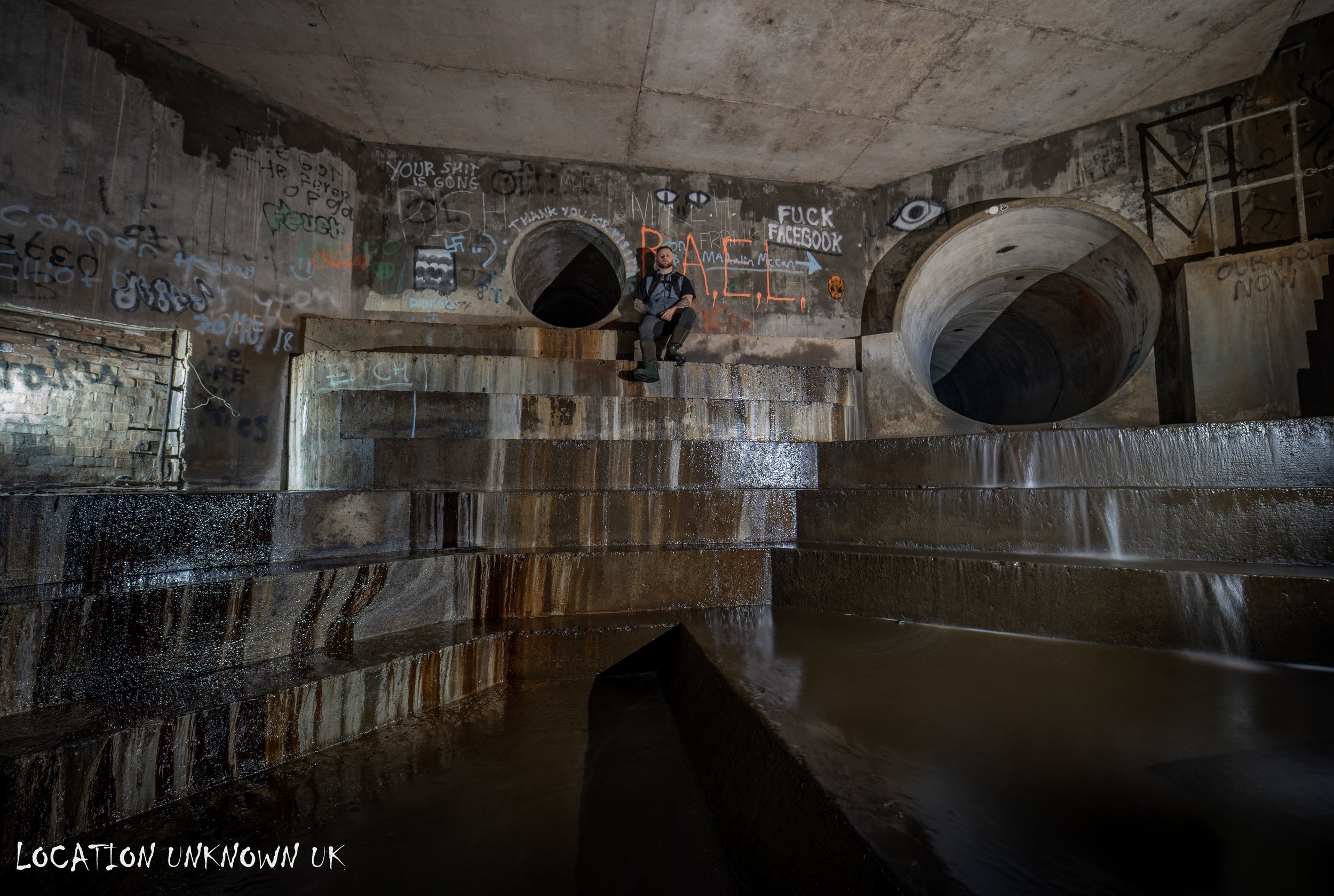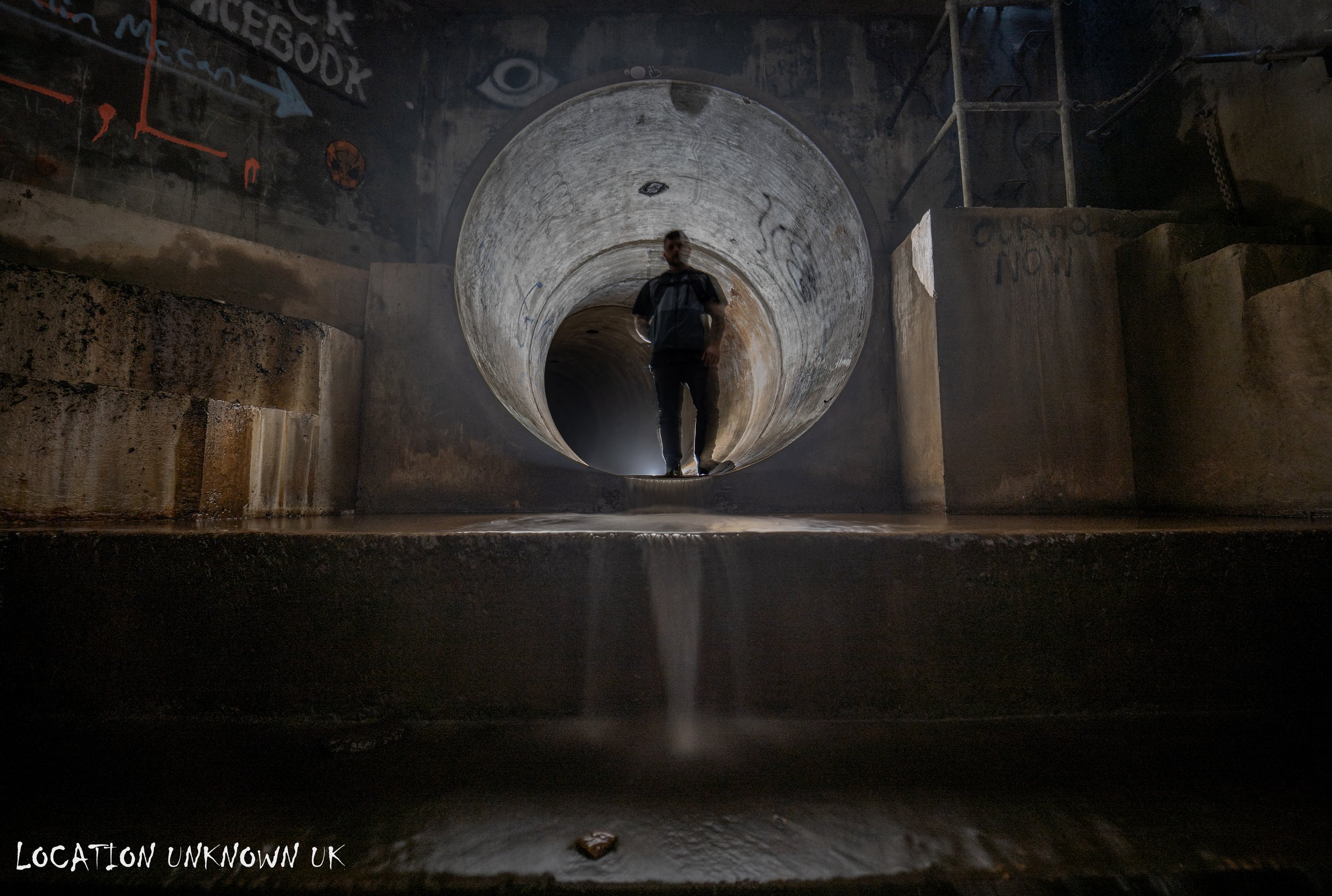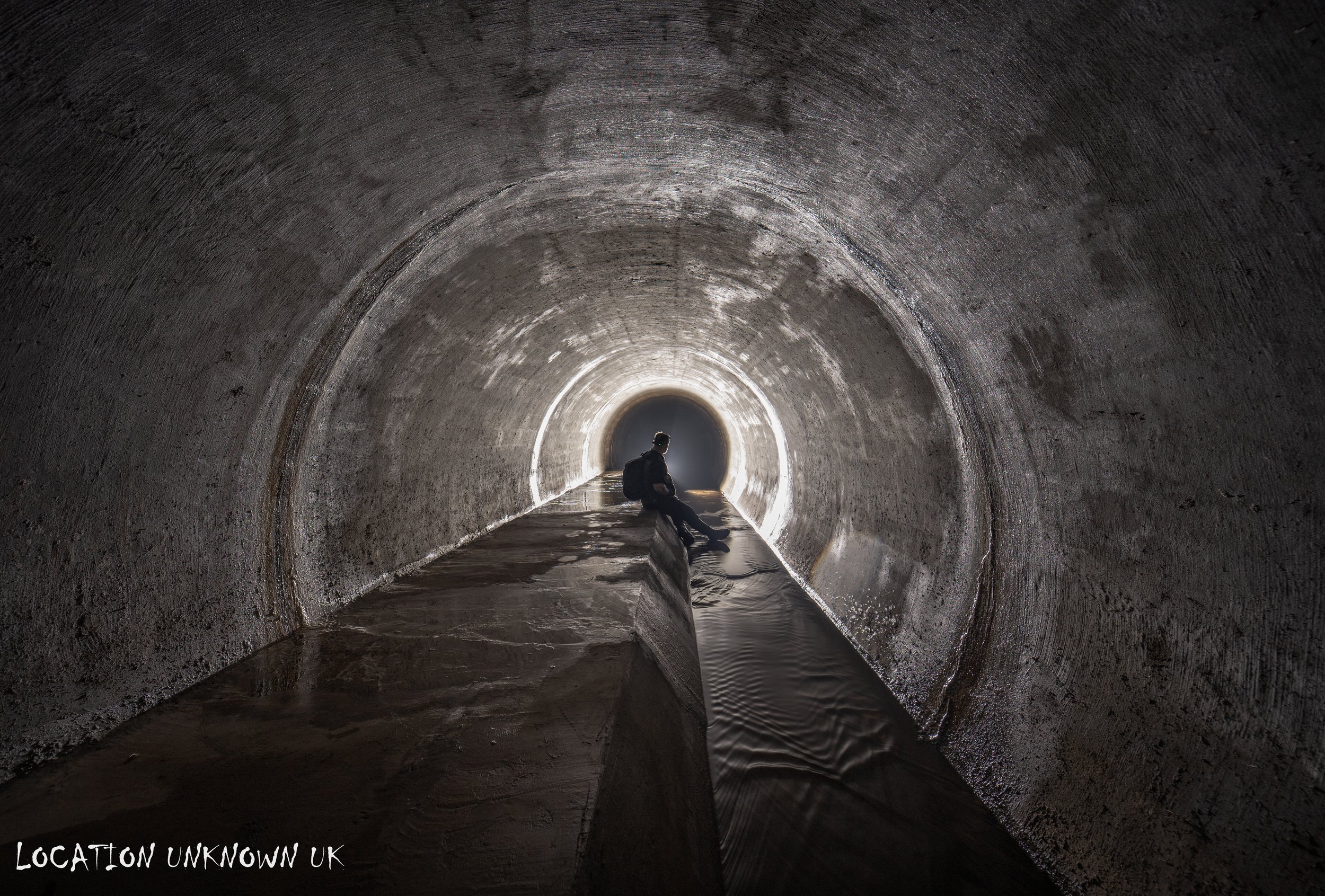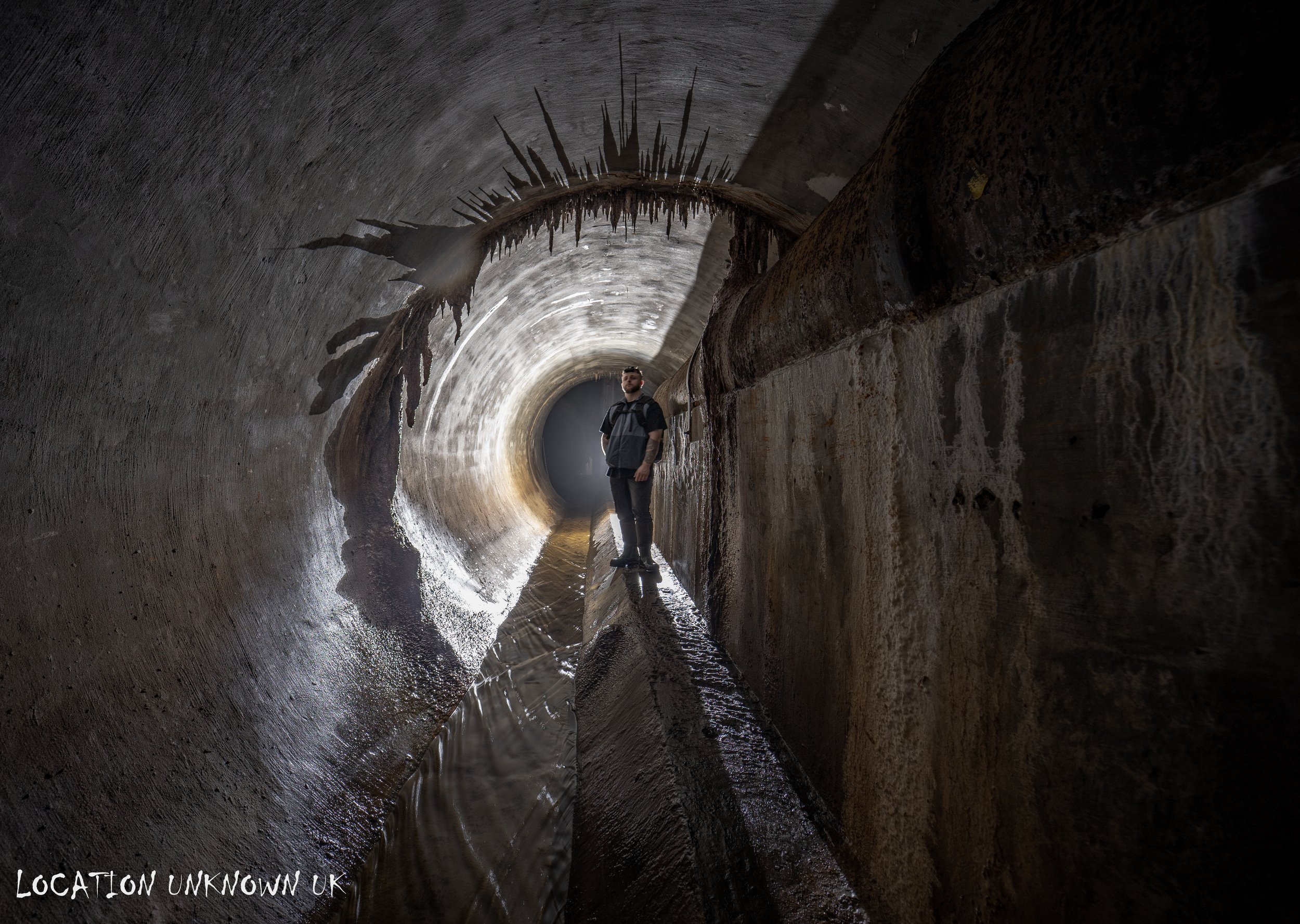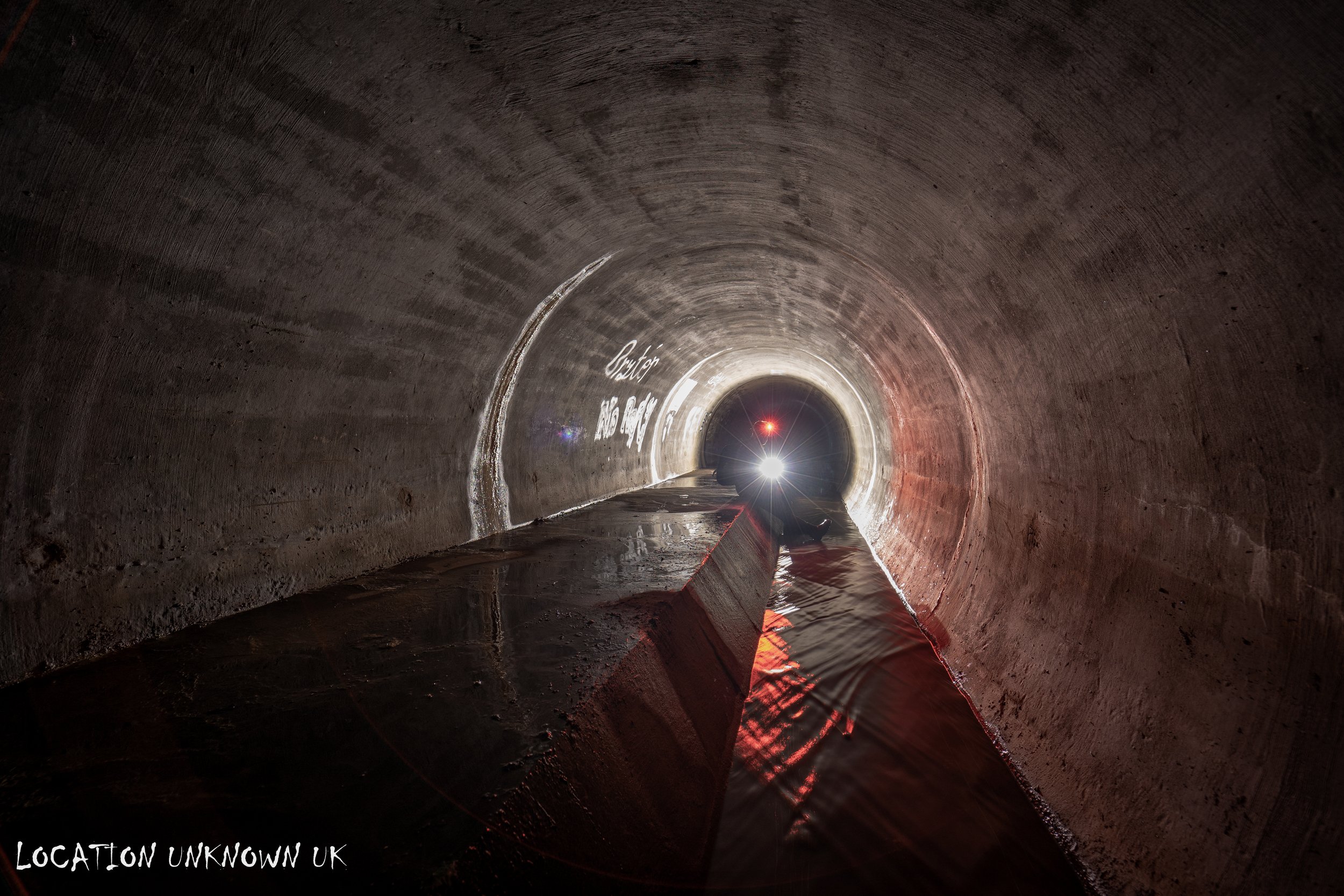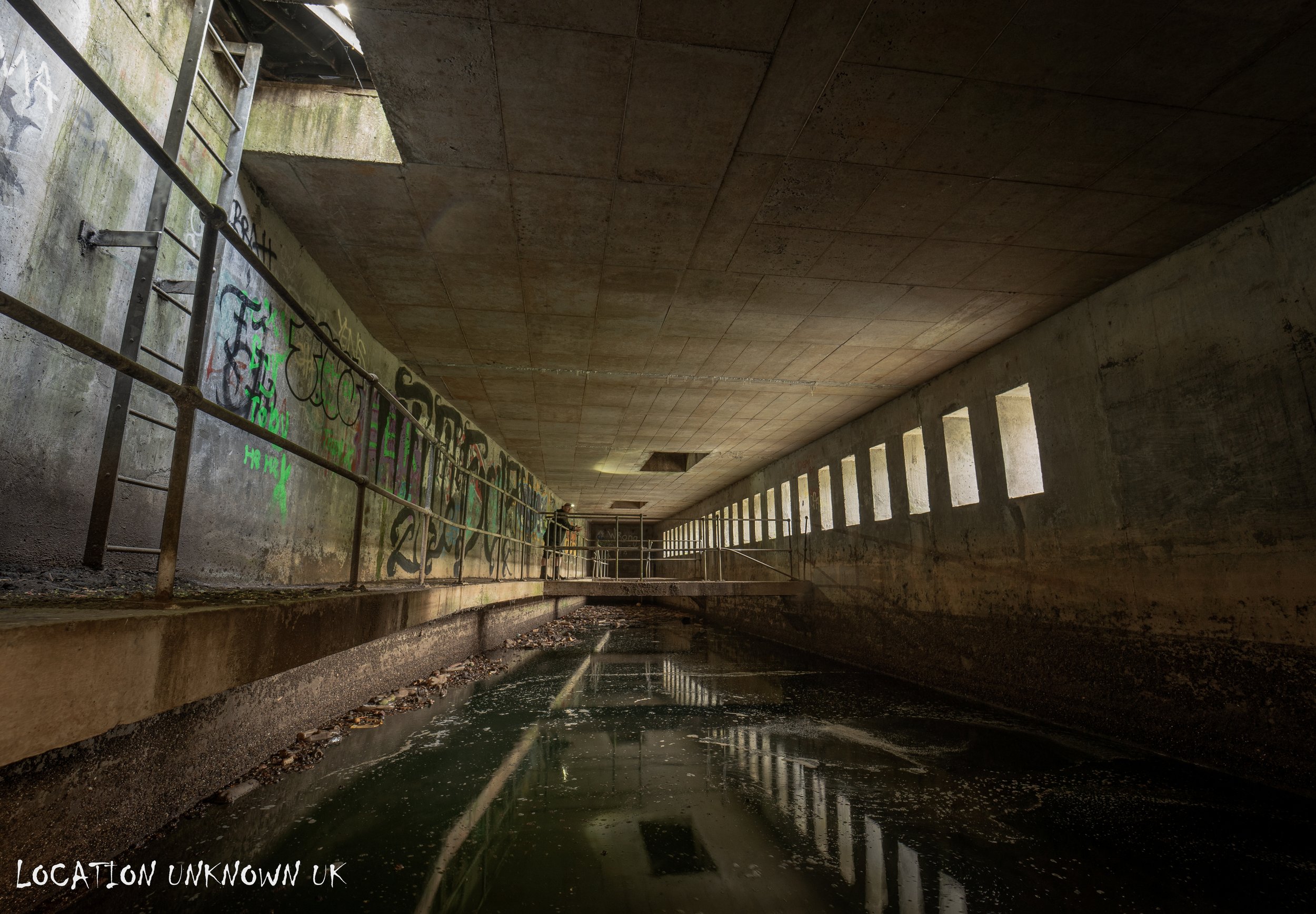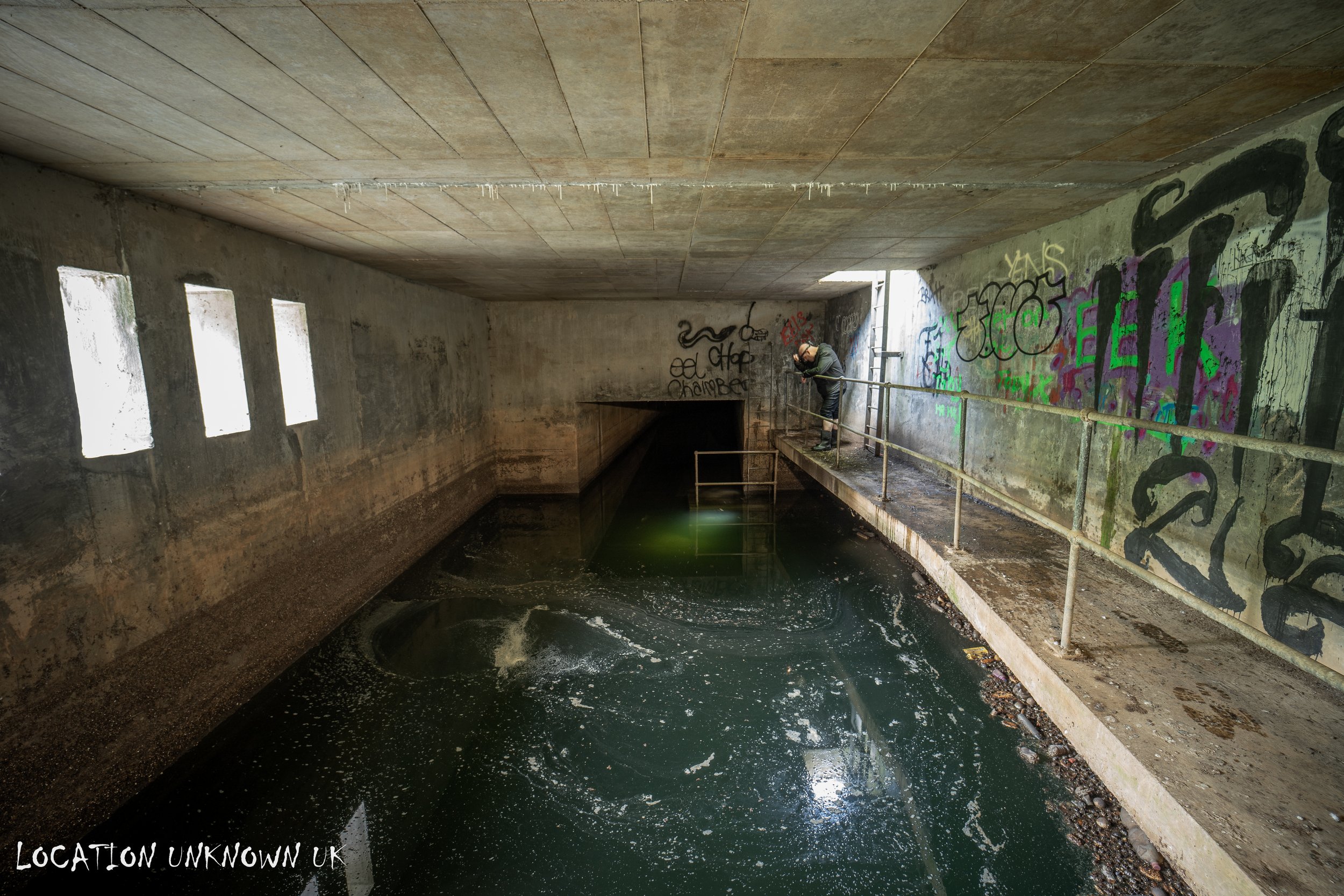Bunker - Warrington
Bunker is one of the first big drain systems I explored some years ago and from that day I was hooked. Knowing that vast places like these exist in most towns and cities across the UK going unnoticed by its inhabitants left an urge to uncover more of these hidden underground spaces. The first couple of visits here we made it up to the overflow concrete staircase where a constant flow of water cascades down.
Following the route up here it shrunk into a back breaking 4ft RCP with no end in sight. We pushed this uncomfortable stoop for quite some distance before giving up knowing that we’d only have to retrace our steps in reverse. I was eager to see more of this system because I was aware of ‘The Plughole’ that hid somewhere within this maze. It was on the third attempt that armed with some useful information, I was able to work out where I had gone wrong in the past and we found ourselves following a new route through a modest 6ft RCP. After around 20 minutes following new ground a loud gushing sound could be heard in the distance which sounded promising.
In drains a small flow of water can sound like a waterfall due to the sound bouncing of the constricted walls. On our approach we saw a large pipe sticking down from the ceiling and a steel ladder behind it. I was surprised as I imagined the plughole would be at ground level and disappear into an unknown void. It seemed we were in fact at the base of the plughole already and able to climb to the top. There is a concrete box section of passage that spills into the plughole and it would be possible to drop into and explore further, however we didn't have any rope to hand and rumour has it the passage slowly shrinks until it becomes impassible with the in fall unknown.
History
“A modern day storm drain is located under a busy town in the north of England. The system was purpose built in the 1980’s to cope with growing population and ever present flood risks, specifically for a 1 in 30 year storm. The system spans for over 3.5miles until it reaches what's known as ‘the plughole’, then continues on for an unknown amount of distance in a concrete box construction. Concrete precast units were manufactured off site and then fitted underground to cover the majority of the drain. The pipes are designed to handle heavy flows and resist wear from debris and chemicals. The RCP along its route ranges in height but is comfortable to walk along without stooping over for the majority of its length. Spraycrete is commonly used when maintaining existing storm drains due to its versatility and strength. The system takes various overflow water from different rivers and carries it underground to the outfall at the Manchester Ship Canal. The outfall itself is a large rectangle concrete structure with numerous slim slots along its back wall similar to a world war 2 style bunker. The outfall here is deep, probably matching the canal in depth and is home to all sorts of wildlife including frogs, fish and lots of eels”.
